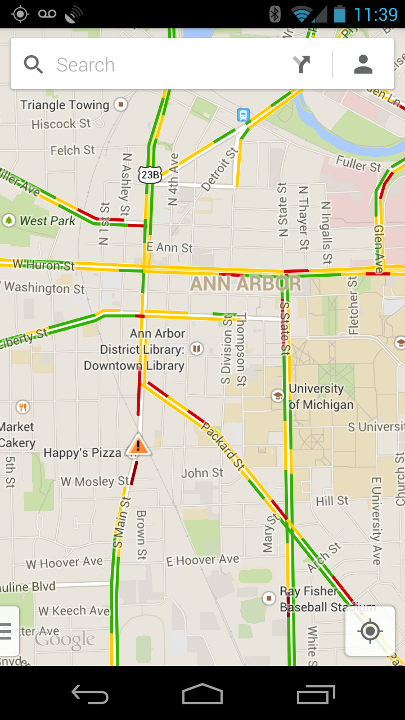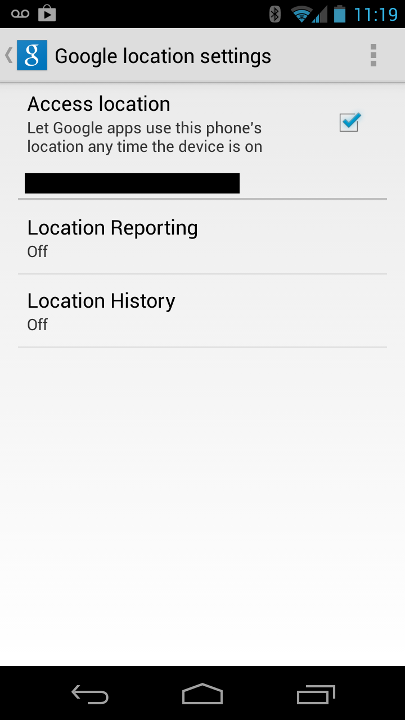I got myself a bike in early May. It has been a long time since the last time I biked, but Holly and I thought that it would be fun to get bikes and ride around. I am a geek and so I have to do some stats tracking. Data collection is pretty easy with a phone since it has a (mediocre) GPS. Here are my findings about various ways to keep track of the data collected while biking.
Map My Ride
While at the bike store, we were told about Map My Ride. When I got home, I checked it out. I liked the elevation over time (for workouts) and over distance (for tracks), the per-week summary conveniently attached right next to the week in the monthly calendar view, and the idea of a leader board for each track. I’d say the major difference between it and the other sites I tried is the split between a route and a workout. A route is just the path, while a workout is a route and timing information. At first that sounded great, but it turns out that this split is utterly useless and lead to data loss for me. (The phone app lets you ride a route and it will associate the route with your workout instead of the default “create a new route from this workout.” Sadly, if you deviate from the route, the whole system gets very confused. It still makes the association and when you view the workout everything looks right, but certain parts of the website believe that you did exactly the route — no more, no less. If you try to edit the route, it obliterates your detailed time information.) I was willing to call that a quirk of the system and work around it (by always making a new route), but then I found out that the  GPX export functionality exports only the route and not the workout. In other words, it does not let you get the detailed time information out of it. That is a deal breaker. I searched and it turns out that other people “complained” about this before. While I think that many of the people there had the wrong attitude, I couldn’t help but notice that it took the staff over two and a half months to respond with a essentially useless comment. Ow! Since I liked the interface enough, I thought that maybe I could live with using My Tracks on my phone to record the data, export it as GPX, and then import it on the web.
GPX export functionality exports only the route and not the workout. In other words, it does not let you get the detailed time information out of it. That is a deal breaker. I searched and it turns out that other people “complained” about this before. While I think that many of the people there had the wrong attitude, I couldn’t help but notice that it took the staff over two and a half months to respond with a essentially useless comment. Ow! Since I liked the interface enough, I thought that maybe I could live with using My Tracks on my phone to record the data, export it as GPX, and then import it on the web.
Couple of days later, someone happened to post a way to get a JSON encoded latitude, longitude, elevation, and time for every workout. I quickly grabbed the data, and whipped up a small Python script to spit out a minimal GPX file.
Custom Software
Initially, I resisted the temptation to write my own custom software to read in the GPS data. When I found out that Map My Ride did not let you export time information, I thought to myself how hard could it be? I had some GPX files I created using My Tracks, so I went and hacked together a quick script which spit out a 100 kB HTML file that used HighCharts to display them. A few observations I made during this were…
- One has to do something smarter than dumping over 100 kB of data into a HTML file otherwise the browser will have unacceptably slow response times.
- Having the GPX file is a great first step, but some post processing needs to be done to account for the variable accuracy of GPS. (I haven’t experimented with better GPS receivers.) If you do not, you will invariably end up with holes in you data (I’ve seen several 30-second intervals without any location updates), and worse yet random jumps from place to place when the GPS receiver changes its mind about where you are. This results in spikes in distance traveled between two location updates leading to huge spikes in speed.
- I should have prototyped my algorithms in R. While running the script and refreshing the page took only a couple of seconds, python doesn’t quite lend itself to the same algorithmic tinkering that R does. (Matlab would have worked too.)
Needless to say, after about 3 hours of playing around, I more or less gave up on the idea of making my own visualization.
Endomondo
I first found Endomondo back in January, when I searched the Android Market Place for an application that would record my GPS location over time. Endomondo is a sports tracker. The free app is pretty simple and straight forward. I think the website is less interesting than Map My Ride’s, but that’s to be expected since Map My Ride caters to cycling. Endomondo makes it easier to find what your best kilometer (or mile) is, while Map My Ride has much better elevation graphing and analysis. While Endomondo felt a bit less feature-full, it lets you export your workouts as GPX with all 4 dimensions.
I was just about ready to switch to it fully (instead of importing My Tracks-generated GPX files), when I heard of Strava during bike-to-work week.
Strava
I thought I would give Strava a shot in case it had more features than Endomondo. I was surprised. The user interface is very clean, and it definitely caters to cyclists (even though it supports other activities). You can view the elevation, speed, and power of a ride with either distance or time on the x-axis with a single click. Strava also differentiates between time and time spent moving and understands that bikes have mass. Strava also has the concept of a “segment”. A segment is a certain path and everyone that takes that path at any point in time will be put on a leader board for others to see. It is interesting to see how you compare to other people in the area.
The Strava android app had issues with Samsung Galaxy Nexus (after you start recording, when the screen blanks as part of the power saving configuration, the app exits), but within a week or two an app update fixed the issues.
Conclusion
My recommendation is either Endomondo or Strava based on what you primarily care about. If you prefer many different sports, I feel that Endomondo will probably work out better for you, while if you are more of a cycling or running fiend Strava is the way to go. Then again, you can sign up for both, and decide which one you like more.
Finally, when I want to just a generic GPS track (e.g., for geo-tagging photos from my camera), I use My Tracks and then export as GPX.


 GPX
GPX